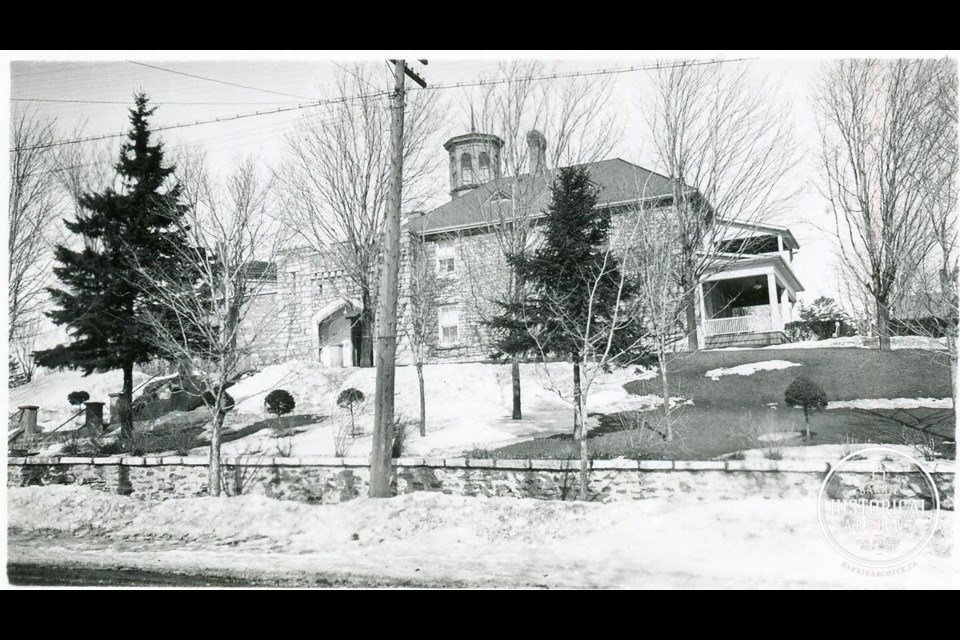This week's 'Remember This?' is Part 3 of a three-part series. To read part one, click here. To read part two, click here.
Many times during the trial of Lloyd Wellington Simcoe, the prosecution emphasized the brutality of the crime and painted a gruesome word picture of the scene. The witnesses also described the horrible event in ghastly detail.
“Walker was hardly recognizable. His face, hands and head were terribly mutilated. His hands were folded across his chest and he was lying on his back in a pool of blood.” – Mr. Hunt, day watchman at Vilas.
“The unfortunate man has been the victim of one of the most fiendish attacks I have ever seen in my forty years of police work.” – Orillia Police Chief William Carson.
What is certain is that the crime was horrendous, an affront to the decent people of Orillia, and surely committed by an evil and dangerous person. Someone needed to pay for this. Was that person Lloyd Simcoe?
Here he was though, sitting in the prisoner’s box, an awkward looking “Indian youth” showing very little emotion. He had made some questionable statements to police and some blood drops had been found on his clothing. Things didn’t look good for Lloyd.
Defence counsel Card seemed to have lost hope as well. Instead of fighting tooth and nail to prove his client innocent, he appears to have also believed Lloyd to be guilty and he showed it.
The Oct. 25, 1945 edition of the Packet and Times reported that “Mr. Card, in his address to the jury, did not ask for a full acquittal for his client. There were, he said, three verdicts the jury might return, acquittal, manslaughter, or not guilty on the grounds of insanity. He said he could not conscientiously ask for an acquittal.” Huh?
Card decided to use a defence that suggested that yes, Lloyd Simcoe had done it, but had been provoked by victim Freeman Walker who had repeatedly insulted his race, and no, Lloyd had not gone to the Vilas plant with an intent to do harm. He also intended to show that Lloyd was mentally deficient and wasn’t responsible for his actions.
The defence then presented a series of witnesses who spoke to Lloyd’s intellectual challenges. His family described him as being delicate since birth and unable to walk until he was four years old. He was introverted, unable to keep up with classmates in school and immature. He was further set back by a serious 30-foot fall from a tree that resulted in several fractures and months of recovery at home.
Dr. Armour, witness for the defence, stated that Lloyd Simcoe could be clinically described as a mental deficient, however Dr. Horne, a rebuttal witness for the prosecution, said that Lloyd was more like a “dull normal.”
How deeply handicapped was Lloyd Wellington Simcoe by his mental health issues and developmental delays, or did it matter at all?
The jury saw the case of a murdered old man and had before them a rather peculiar youth accused of the crime. In the end, the outraged community saw that Freeman Walker got his justice.
Lloyd Wellington Simcoe was found guilty of the crime of murder on Friday, Oct. 20, 1945 and given a date with the hangman five days before Christmas. Mr. Card immediately got to work and applied for a stay of execution based on the youthfulness of the convicted and his mental disabilities. He was unsuccessful.
Lloyd Simcoe appears to have waited for his fate with quiet resolution. He was reportedly a model prisoner, ate well, and spent his time listening to the radio as any teen might.
Seventy-three years ago this week, the Packet and Times of Dec. 20, 1945 reported the news of the first execution for murder in Orillia history.
“At 6:30 this morning, Lloyd Wellington Simcoe, 17 year old Orillia Indian, was hanged at the County Gaol in Barrie.”
Each week, the Barrie Historical Archive provides BarrieToday readers with a glimpse of the city’s past. This unique column features photos and stories from years gone by and is sure to appeal to the historian in each of us.



